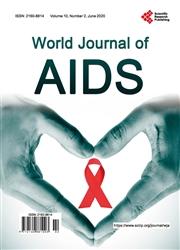Telehealth Combined with Differentiated ART Delivery Improves ART Pick Up during COVID 19 at a Large HIV Treatment Facility in Trinidad and Tobago
引用次数: 1
Abstract
Objective: To describe the implementation and outcomes of using telehealth in combination with a differentiated ART delivery model to improve HIV antiretroviral therapy pick up at a large treatment facility in Trinidad and Tobago during COVID-19. Design and Methods: Beginning in April 2020, a list of patients was generated daily prior to their scheduled ART appointments. Nurses, doctors and social workers conducted telephone consultations to first screen patients for COVID-19 symptoms, conducted brief medical and behavioural health screenings, and helped patients to identify barriers to ART retention. Patients were recommended for 1) fast track ART refill collection at facility, 2) community ART refills, and 3) ART pick-up through patient peers. The uptake and outcomes of telehealth and ART pick up were compared with the corresponding period in 2019. Data was analyzed using SPSS 21.0. Results: During the period April-June 2020, 1361 patients were identified for telephone consultations, 1084 (80%) were successfully contacted and 984 patients (88%) participated in phone session. The independent t test showed a significant increase in ART pick-up when compared to the corresponding period in 2019. 59% of patients collected via fast-track ART refill, 30% had community refills, and 11% pick-up medications through patient peers. Conclusion: Telehealth is an integral component of DSD as part of the COVID-19 response at the MRF. Understanding the medium and longer-term outcomes of Telehealth can provide additional insights on the scale up of telehealth as a component of DSD to improve ART outcomes for patients in the context of the developing countries of the Caribbean.远程医疗与差异化抗逆转录病毒治疗相结合,改善了特立尼达和多巴哥一家大型艾滋病毒治疗机构在2019冠状病毒病期间的抗逆转录病毒疗法接受情况
目的:描述在新冠肺炎期间,在特立尼达和多巴哥的一家大型治疗机构使用远程医疗与差异化抗逆转录病毒疗法提供模式相结合的实施和结果,以改进艾滋病毒抗逆转录病毒治疗。设计和方法:从2020年4月开始,每天在预约ART之前生成一份患者名单。护士、医生和社会工作者进行了电话咨询,首先对患者进行新冠肺炎症状筛查,进行了简短的医疗和行为健康筛查,并帮助患者识别保留抗逆转录病毒疗法的障碍。建议患者1)在设施中快速收集ART再填充物,2)社区ART再填充,以及3)通过患者同行收集ART。将远程医疗和抗逆转录病毒疗法的接受率和结果与2019年同期进行了比较。数据采用SPSS 21.0。结果:在2020年4月至6月期间,1361名患者被确定进行电话咨询,1084名(80%)患者被成功联系,984名患者(88%)参与了电话会议。独立t检验显示,与2019年同期相比,ART的发病率显著增加。59%的患者通过快速ART再填充收集,30%的患者通过社区再填充,11%的患者通过患者同行获取药物。结论:远程健康是DSD的一个组成部分,是MRF应对新冠肺炎的一部分。了解远程医疗的中长期结果可以为扩大远程医疗作为DSD的一个组成部分提供更多的见解,以改善加勒比发展中国家患者的ART结果。
本文章由计算机程序翻译,如有差异,请以英文原文为准。
求助全文
约1分钟内获得全文
求助全文

 求助内容:
求助内容: 应助结果提醒方式:
应助结果提醒方式:


